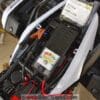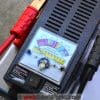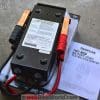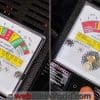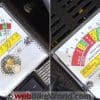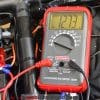I found this “Traveller” brand 100 amp battery tester at the local Tractor Supply farm store.
They were having a big sale and it was $17.95 and I was on the checkout line so I thought “Why not?” It seemed like a pretty good deal.
I wasn’t quite sure what it could do or why I needed it, but it looked pretty cool.
And the price… OK, I’m a checkout-line sucker, I’ll admit it.
Anyway, I thought maybe it was some type of heavy-duty load tester?
Come to find out that this particular type of battery tester is a very generic device and it’s sold under a whole bunch of brand names.
This one is the Tractor Supply “Traveller” brand, but it’s also known as the Schumacher BT-100; the NOCO BTE118; the Milton 1260 as well as a half-dozen other brand names.
Schumacher makes full-on battery chargers (yes, I have one of those also) and other value-priced electrical testing equipment.
And the NOCO brand name is familiar to motorcyclists; we reviewed the NOCO Genius G750 maintenance battery charger not too long ago.
But this generic battery tester and its clones are probably all made in the same Chinese factory. Somebody slaps their brand name sticker on it and calls it done.
And by the way, this battery tester was designed for cars, not motorcycles. For one thing, it comes with huge terminal clamps, which are difficult to use on a motorcycle, as I discovered.
But it should work with any powersports battery over about 175 CCA (Cold Cranking Amps), which means motorcycles, ATVs, lawn equipment and more.
So let’s take a real quick look to see whether it’s worth a shot.
See Also: More Motorcycle Battery & Charger Reviews & Favorite Products
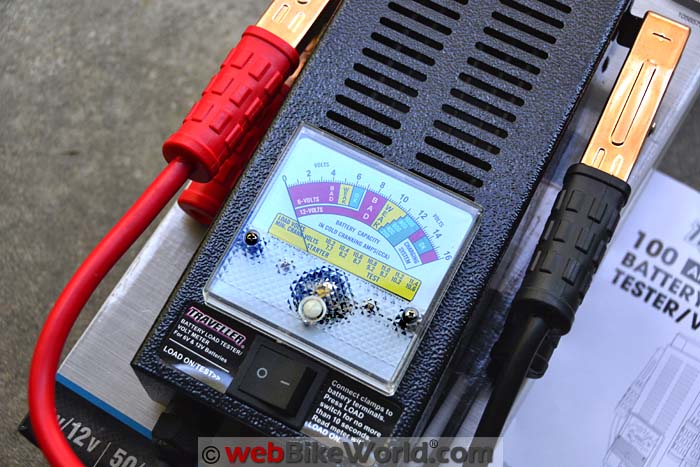
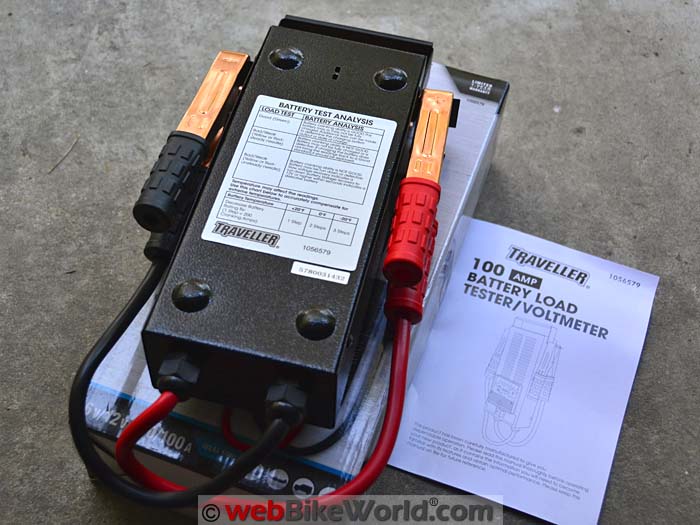
The Traveller 100 AMP Battery Tester
First of all, it’s important to know that this tester was not specifically designed for motorcycles. But, a vehicle battery is pretty much a vehicle battery, whether it’s a car, motorcycle, ATV, etc.
And while we’re in disclaimer mode, as far as I can tell, there really isn’t anything you can do with this battery tester that you can’t do with a multimeter.
In fact, I think you’re better off with a cheap multimeter, because it’s much more useful and it can do a heck of a lot more when you’re messing around with motorcycles.
This one basically tests “static” battery voltage and then it acts as a crude load tester so you can see if there’s any voltage drop when you start the bike.
Actually, I thought at first that it was a real load tester — something that can be connected to the battery to run a battery (hah!) of stress tests to get a good check on the battery’s health.
But in fact, it’s just a resistance-type tester, with a big resistance coil underneath those vents.
Which brings up a caution: this thing gets hot, so be careful. And it will smoke the first 2-3 times it’s used, as the coating or something burns off the resistance coil.
However, the biggest problem with this tester is the size of the clamps. They’re made by and for Godzilla’s Peterbilt battery.
I didn’t realize this until I tried it on a motorcycle for the first time. Let’s just say that clamping these babies on a petite motorcycle battery is difficult at best and impossible most of the time.
Impossible as in the webBikeWorld 2015 Kawasaki Versys 650 LT Project Bike (Blog).
The ground/negative terminal on the Versys is semi-hidden under the rear fuel tank mount, so the Brobdingnagian ground clamp can’t get a purchase on the terminal with these monster-sized clamps.
I’m not sure why they need such big clamps, but anyway, that’s what you get.
So for that reason alone, this battery tester is pretty much out of contention.
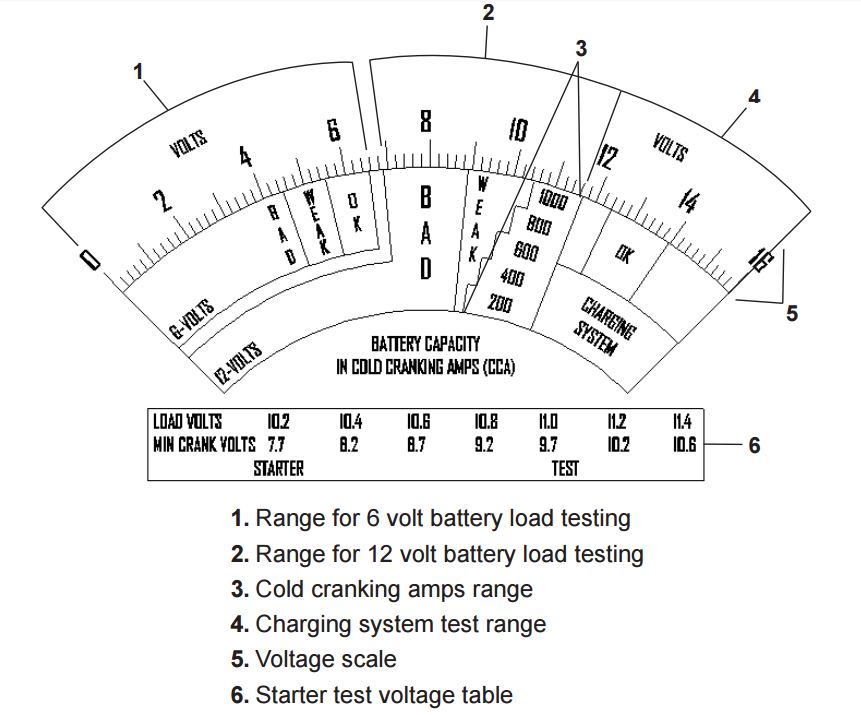
Using the 100 AMP Battery Tester
I won’t go through the entire instruction set, which is pretty basic anyway. But here’s a .pdf version of the owner’s manual (for the BT100, courtesy of Schumacher).
Basically, you connect the tester, read the voltage, then start the bike and see if the voltage drops.
The instructions call for knowing the battery’s CCA, or Cold Cranking Amps, but this information isn’t always readily available for a motorcycle battery.
The the CCA levels are read off one section of the display, shown on the battery tester in the image above. Just know that motorcycle batteries are generally around 175-225 CCA and go from there.
The display is hard to read anyway, so as long as you’re “in the ballpark” (green), that’s all you can expect from this tool.
There’s a spring-loaded switch that is held for 10 seconds during the test. It sends the load through the resistance coil as you read the results on the display.
But the display is somewhat difficult to read, so you only get an estimation of the voltage.
For example, you can see in our photos that the battery tester looks like it’s showing “Weak” (second photo below on the right), when in fact if you look closely, it’s just on the edge of the green for 200 CCA, which actually means it’s OK.
This is where a multimeter comes in handy — especially a recording multimeter with a min/max setting.
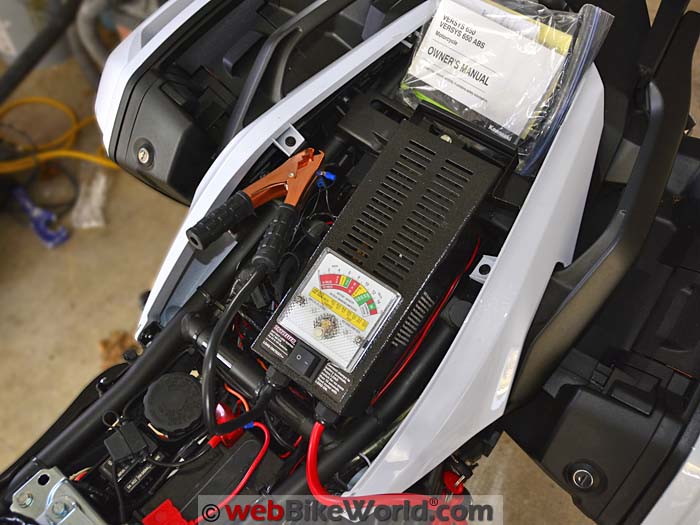
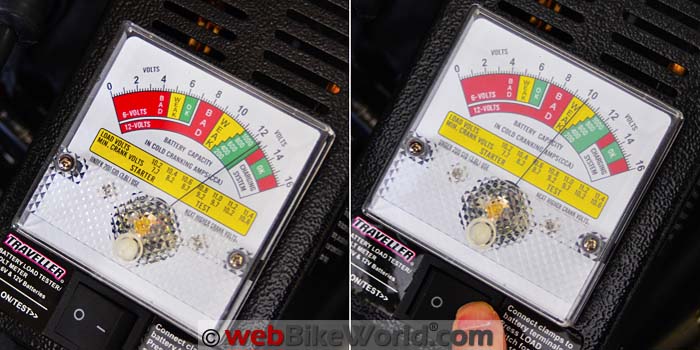
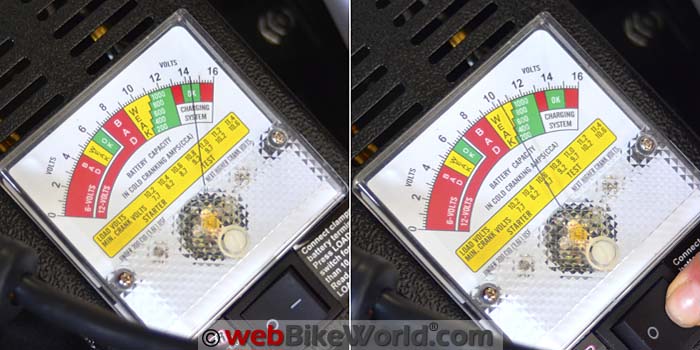
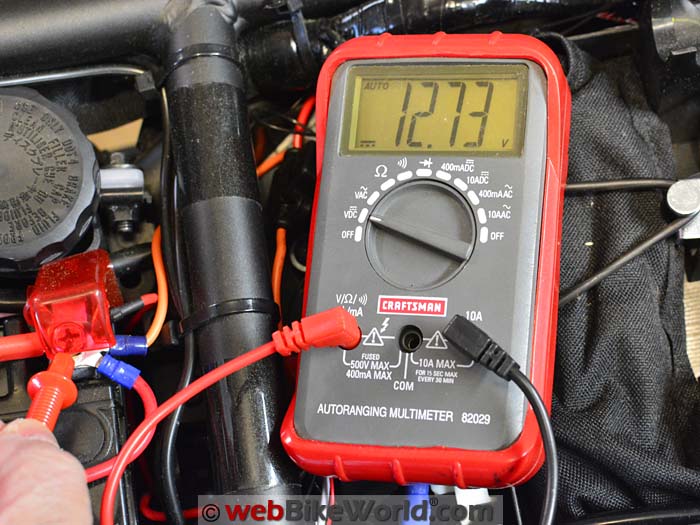
Use a Multimeter Instead
As far as I know — and I hope someone will correct me if I’m wrong — you can run the same tests with a multimeter as you can with this dedicated battery tester.
In fact, here are the simple motorcycle battery load test instructions from Yuasa for using a multimeter. They’re much less complicated than using the tester.
To use a multimeter, to check the voltage of the battery before the bike is started (the “static” test). is to first set the multimeter for “Volts DC”.
Then hold the negative (black) probe on the ground/negative terminal of the battery and the red probe on the plus or power terminal of the battery.
Your battery should read somewhere above 12.6 to 12.8 volts or so.
Next, to check battery load, start the bike with the probes still attached to the terminals. You can either connect them with alligator clips or have someone hold the probes in place.
Yuasa says if the battery drops to 9.5 volts, that’s bad and the battery probably needs to be replaced.
I’m skimming over all the details here; we could probably have a 5-page article and still not cover everything you need to know or can do to test a motorcycle battery.
Obviously, this is meant to be a very basic overview but if anyone has more detail they’d like to share, feel free to chime in via the comments section below the summary table at the bottom of the page.
Charging System Test
You can also run a simple test to get an idea of the performance of the motorcycle’s charging system.
Again, hold the multimeter probes on the battery terminals, with the multimeter in VDC mode.
Then start the bike and hold the RPMs to around 3,000 or so.
The voltage should be about 13.8 to 14.5 volts.
Don’t Forget: Clearwater Voltage Sentry
Another thing you can do is to constantly monitor your motorcycle battery by installing a Clearwater Voltage Sentry (review).
We have 4 of these installed on various bikes; Rick flush-mounted his on the Versys 650.
It’s super-accurate, with digital multimeter-style resolution.
Watch for the green light or green blinking light and you’re good to go. Anything else and there’s a problem, then you can start getting into deeper levels of testing.
Conclusion
There are 3 basic battery tests you can do with the generic 100 AMP battery tester, but I think it’s both easier and actually quicker to do the testing with a multimeter.
Plus, you can use a multimeter for so many other things — like continuity checks, probably the most popular use of a multimeter when you’re working on a motorcycle, because you can check grounds, wiring, etc.
So my recommendation is to spend your money and buy a multimeter instead, like this popular (and also generic) digital multimeter for $12.99.
UPDATE: I wanted to make it clear that I’m not saying that a multimeter is always better than a true battery load tester.
But I don’t think this $20.00 battery load tester I described above does anything more than a multimeter. For a typical motorcycle owner, a multimeter would probably be the better investment.
A true battery load tester of the type found in a motorcycle or automotive repair shop can indicate more serious problems.
Please send us your thoughts or add to this article via the comments section below.
wBW Motorcycle Battery & Charger Reviews | Maintenance & Repair Articles
| wBW Review: Motorcycle Battery Tester | |
|---|---|
| Manufacturer: Schumacher (?) | List Price (2017): ~$21.00 and up |
| Colors: Black | Made In: China |
| Review Date: February 2017 | |
Owner Comments and Feedback
See details on submitting comments.
From “J.S.” (February 2017): “The (ANCEL BA101 Professional) is a good battery tester and more suitable for motorcycles.”
From “J.D.” (February 2017): “Having spent several years as a battery and charger tech for the forklift industry, I can vouch for the usefulness of a load test device.
Lead acid batteries have individual cells that are fully charged at 2.34 volts per cell, DC. Cells are considered fully discharged (i.e., unable to provide sufficient electromotive force (Voltage)) when the level drops to less than 2 VDC per cell.
(Six cells in series is what a 12 volt battery has as an internal construction).
Fully charged, the voltage would be 14.04 VDC not 12. This is also why charging systems for so called 12 volt applications deliver 14-14.5 VDC. 11.99 VDC is not acceptable.
This is the at rest, no load condition. Using a load tester not only reveals the load capacity of the battery but the recovery voltage as well.
Release the switch and check for the return of the needle to pre test voltage levels. You are able to see how amperage affects voltage.
Knowing CCA helps to visualize the relationship. I like the water hose analogy: Water is the voltage, amount of flow is the amperage. A multi meter is useful but not a substitute for a load tester.”
From “F.M.” (February 2017): “While a multimeter is a must-have piece of equipment, for me, it’s an adjunct to a battery load tester, not a replacement for one.
The Yuasa test to which you linked to is a crude test for use by people who don’t have access to battery load testers. Neither the load current nor the time under load is fixed.
If the bike starts in a couple of revolutions of the crank on a warm day, even a weak battery may stay above 9.5V. But what happens when you try to start that same bike on a cold winter day and it needs to crank for 8 seconds?
The Yuasa test is like trying to assess your fitness by measuring your heart rate while you run an unspecified distance.
BTW: I agree with you about the clamps — I have one of those testers sold under another brand name.”
From “M.E.” (February 2017): “Just a couple of thoughts on the battery tester vs. meter.
Supposing you have a battery struggling to turn over an engine. Your digital meter could show low voltage because: a, the battery’s duff; b, the starter’s duff; c, a bit of both the above.
If you use a battery tester it’s a fixed load on the battery, so your only testing the battery, not the starter (or the solenoid or the wiring).
What would be ideal is a motorcycle specific battery tester because this ones range is rather high and for bigger car batteries.
If you tested your battery with a battery tester every few months you’d be become familiar with what your batteries reading when its in good condition, then you’d know for sure whether it’s the battery or a problem with the starter.”
Editor’s Reply: You can also use a multimeter to test the resistance of the starter solenoid. But the battery must be in good condition first, capable of starting the bike, before you can start testing sub-components like the starter.
I always keep all of our bikes on a maintenance charger whenever they’re not being ridden, that is important.
Also, as mentioned in the article, a Clearwater Voltage Sentry is ideal for continuous monitoring of the battery condition, both when the bike is parked and being ridden.


